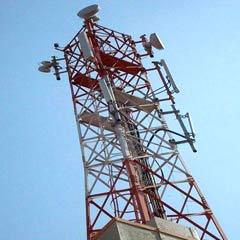  With rising penetration of telecom services in India and future introduction of newer generation wireless network requiring more telecom tower deployment across the country, telecom tower market is expected to grow at a CAGR of around 30% till 2015 in the country, according to Netscribes.
Indian telecom sector is the third largest sector in the world and second largest among the Asian emerging economies. Amongst the 811.6 bn wireless subscribers in India, 66% reside in urban areas and 34% hail from rural areas. With low penetration in the rural areas which accounts for nearly 70% of the country’s total population, there remains a huge potential in rural front.
The telecom infrastructure primarily consists of telecom tower operation and it takes up around 60-65% of the total infrastructure deployment and management cost. “If we ignore power and fuel expenses, telecom tower generates roughly INR 180-200 bn of revenues annually, in the present market scenario” says Kalyan Banga, Product Manager at Netscribes.
The report begins with ‘Introduction’ section covering overview of telecom industry which provides basic idea of the state of the overall industry, telecom tower vertical’s position in the industry, the types of telecom towers and a pictorial representation of basic telecom network infrastructure.
The ‘Market Overview’ section elaborates global & domestic market state of telecom tower business. It is accompanied by a plethora of statistical information regarding wireless tower in global scenario as well as in India such as global trend, domestic telecom tower demand or requirements, revenue generated from telecom towers, state of cell tower orientation in major countries and other related information. The India section also elaborates on the numbers of telecom towers in various states, market share of major telecom tower companies, telecom tower business model and the major government bodies.
It is followed by ‘Scope in India’ section where various potential areas for telecom towers in India are elaborated. Specific aspects such as government policy and rural opportunity have been highlighted with information regarding their state and future prospect of the same. The section continues with ‘Types of Infrastructure Sharing’ stressing on the two major types of sharing prevalent across the globe. It also focuses on major benefits of telecom infrastructure sharing and it is explained with the help of tower profitability matrix along with an example. Details regarding USO fund scheme for infrastructure sharing and it scope of work. SWOT analysis of the infrastructure sharing has been presented to further strengthen the understanding regarding pros and cons of the same. The section ends with elaborating on various financial and operational incentives available in the industry along with beneficiary initiatives taken by Telecom Regulatory Authority of India (TRAI).
The report continues with ‘Drivers & Challenges’ section elaborating the major furtherance & impediments for telecom towers market in India. Both the ‘drivers’ and ’challenges’ are equally stressed upon to provide clear idea regarding the probable obstacles and rewards in the line of business and help vendors take necessary measures.
In the ‘Major Telecom Tower Companies’ section, the key wireless tower companies are profiled. It provides information suc |